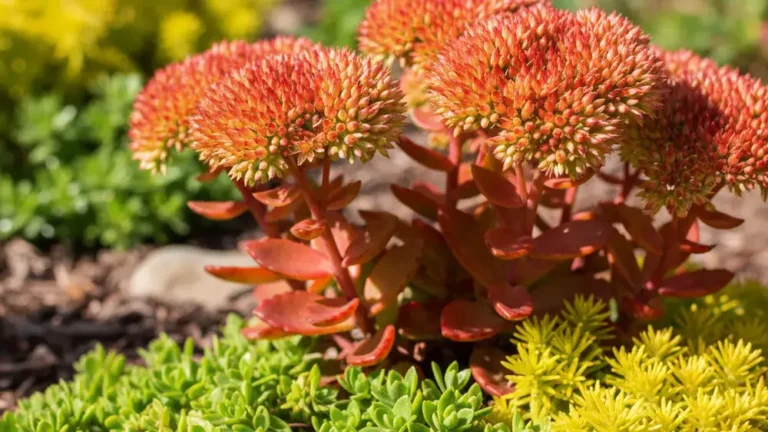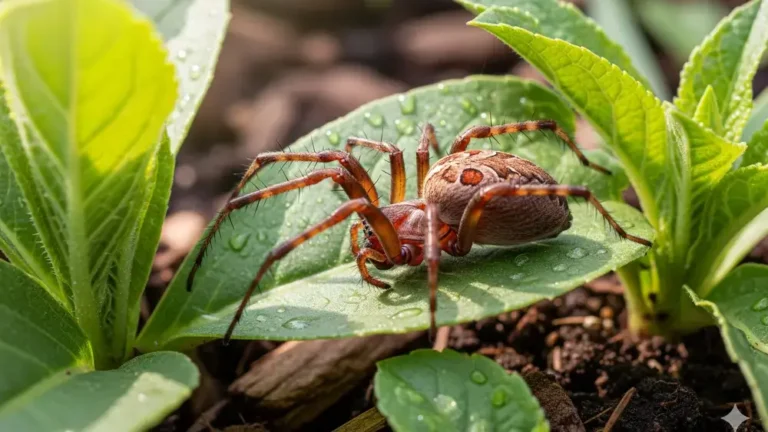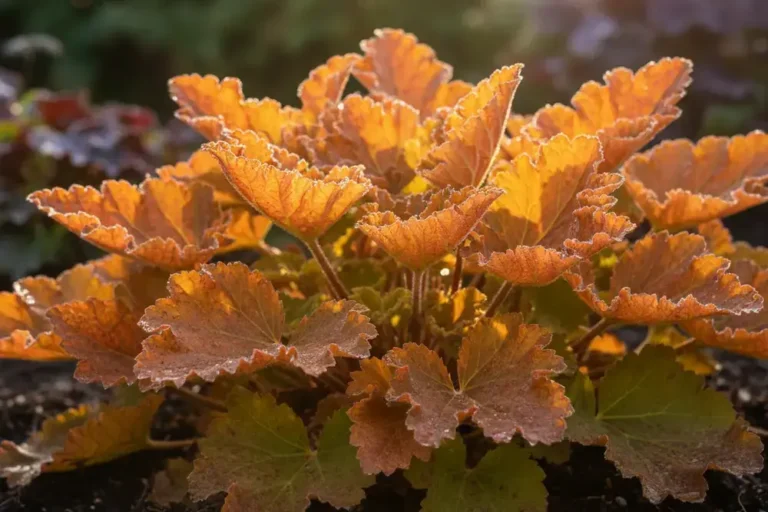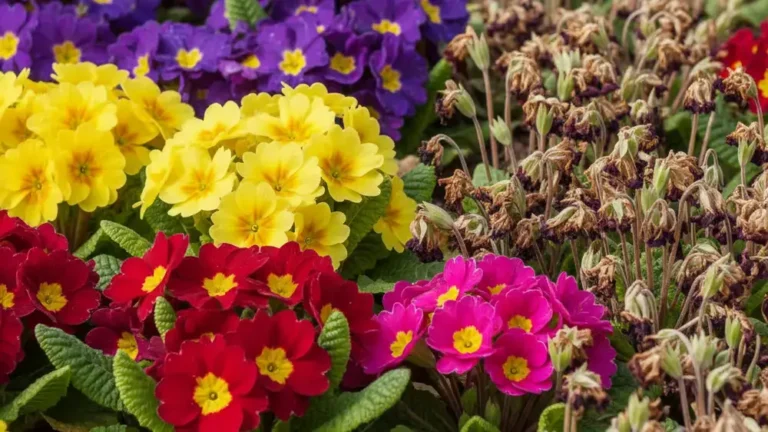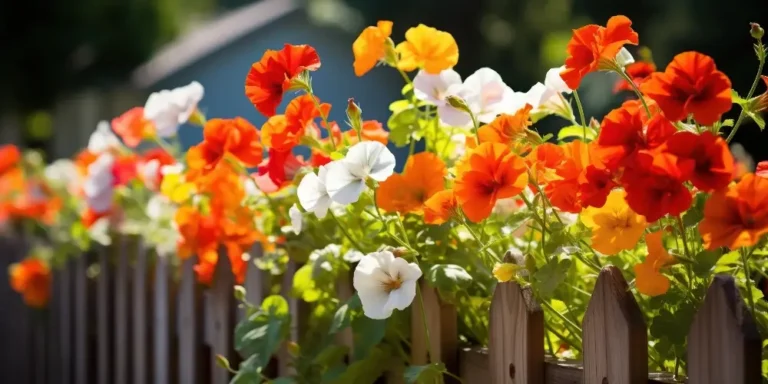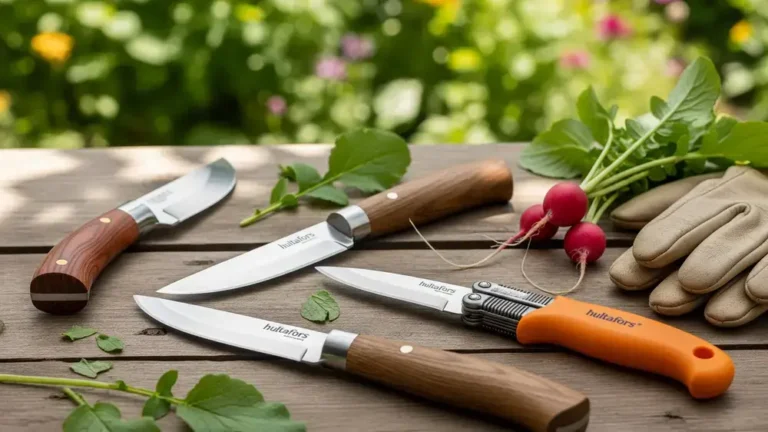How to Grow a Dark Purple Coleus Plant
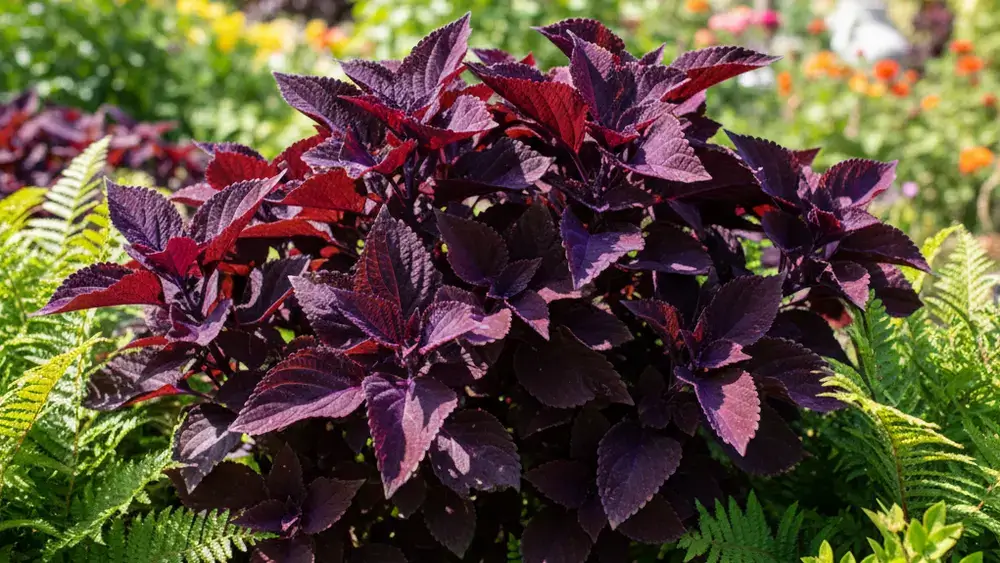
If you’ve ever wanted to add a burst of bold, vibrant color to your garden without needing to wait for flowers to bloom, the dark purple coleus plant is your answer. With its deep, velvety leaves and striking appearance, this plant can instantly transform both indoor and outdoor spaces. Best of all, it’s easy to grow, even for beginners.
In this guide, we’ll walk through everything you need to know about growing and caring for a dark purple coleus plant—from choosing the right spot, watering and feeding, to pruning and keeping pests away. By the end, you’ll feel confident about adding this beautiful plant to your own garden.
What Makes the Dark Purple Coleus Plant Special?
Coleus is loved around the world for its colorful foliage, but the dark purple coleus plant stands out with its dramatic hues. Instead of relying on flowers for beauty, its richly colored leaves make it a showstopper in any setting.
Gardeners often use it to:
- Brighten up shady corners.
- Add contrast in mixed garden beds.
- Create a striking focal point in containers.
Another reason it’s so popular? It’s incredibly beginner-friendly. Even if you’re new to gardening, coleus rewards you with lush growth when given a little care.
Choosing the Right Location for Your Dark Purple Coleus Plant
Sunlight Needs
Coleus thrives in partial shade to filtered sunlight. While some varieties tolerate more sun, the dark purple coleus plant often performs best when protected from the hottest afternoon rays. Too much direct sun can cause the foliage to fade, while too little light may make the plant leggy.
For indoor growing, place it near a bright window with indirect light. Outdoors, morning sun and afternoon shade are ideal.
Temperature and Climate
This plant loves warmth. It grows best in temperatures between 60–75°F (15–24°C). If you live in cooler regions, treat coleus as an annual or bring it indoors before frost arrives. It’s not frost-hardy, so plan accordingly if you want to keep it year after year.
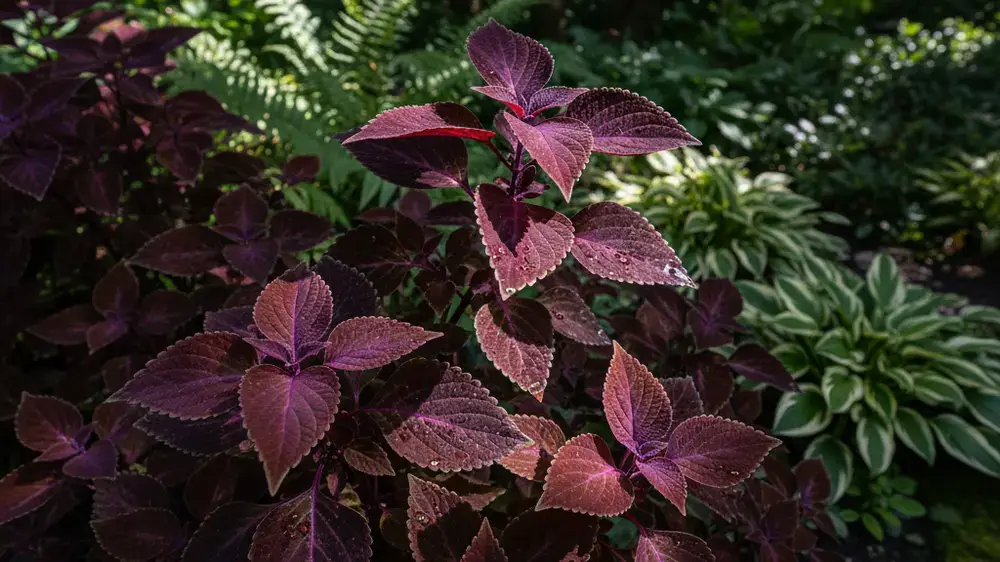
Soil and Potting Mix for a Healthy Coleus
Best Soil Type
The dark purple coleus plant prefers well-draining, nutrient-rich soil. A mix of garden soil, compost, and perlite or sand works perfectly. Adding organic matter ensures that the soil retains moisture without becoming waterlogged.
Container Gardening Tips
Coleus grows beautifully in pots, making it a great choice for patios, balconies, or indoor décor. Choose a container with drainage holes and make sure it’s at least 8–10 inches wide to give the roots room to spread.
A helpful tip: pair coleus with lighter-colored plants in a container arrangement for a stunning contrast.
Watering and Feeding Your Dark Purple Coleus Plant
Watering Guide
Coleus loves consistently moist soil, but not soggy conditions. Water deeply when the top inch of soil feels dry. In summer, you may need to water daily if the plant is outdoors in containers.
Overwatering can lead to root rot, so always check soil moisture before adding more water. Indoors, make sure your pots have good drainage.
Fertilizer Needs
To keep foliage vibrant, feed your dark purple coleus plant every 2–4 weeks during the growing season with a balanced liquid fertilizer. Over-fertilizing can make the plant grow too tall and lose its compact, bushy shape, so stick to recommended amounts.
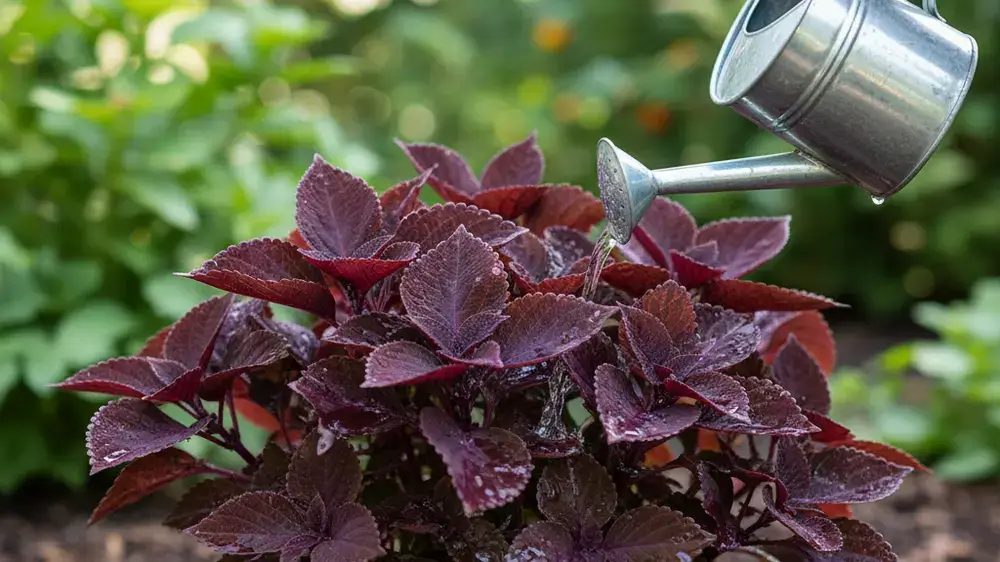
Propagation: Growing More Dark Purple Coleus Plants
One of the best parts of owning a coleus is how easy it is to propagate.
Stem Cuttings
- Cut a 4–6 inch stem just below a leaf node.
- Remove lower leaves and place the cutting in water or moist potting mix.
- Roots typically appear within 2 weeks.
- Once rooted, transplant into soil for a brand-new plant.
This method is perfect for sharing with friends or filling more corners of your garden with color.
Growing from Seeds
Coleus can also be grown from seeds. Start them indoors about 8–10 weeks before the last frost. Keep the soil warm and moist until seedlings emerge. Although slower than cuttings, this is a fun way to experiment with new varieties.
Pruning and Maintenance Tips
Pruning is essential for keeping your coleus looking its best.
- Pinch off the tips of stems to encourage bushier growth.
- Remove any flower spikes as soon as they appear, since flowers drain energy from the foliage.
- Trim leggy stems to maintain a compact shape.
Regular pruning not only improves appearance but also helps extend the life of the plant.
Common Pests and Problems
Pests to Watch For
The dark purple coleus plant can sometimes attract pests like aphids, mealybugs, and whiteflies. Inspect the leaves regularly. If you notice pests, treat with insecticidal soap or neem oil.
Disease Issues
Overwatering is the most common issue, leading to root rot or fungal diseases like powdery mildew. To prevent problems, use well-draining soil, avoid wetting leaves during watering, and provide good air circulation around the plant.
Seasonal and Indoor Care Tips
Overwintering Your Coleus
In colder climates, coleus won’t survive outside during winter. Bring it indoors before the first frost. Place it in a warm, bright room and reduce watering slightly during the cooler months.
Indoor Care Tips
Indoors, your dark purple coleus plant will still need plenty of indirect light. Rotate pots occasionally so the plant grows evenly. A spot near an east-facing window often works well.
Creative Ways to Use Dark Purple Coleus Plants
Coleus is versatile and can be used in many ways:
- As a border plant in flower beds.
- Mixed in containers with trailing plants like ivy.
- In shady corners of the garden where flowers struggle.
- As an indoor accent plant in decorative pots.
By combining coleus with other foliage plants, you can create dynamic and colorful displays year-round.
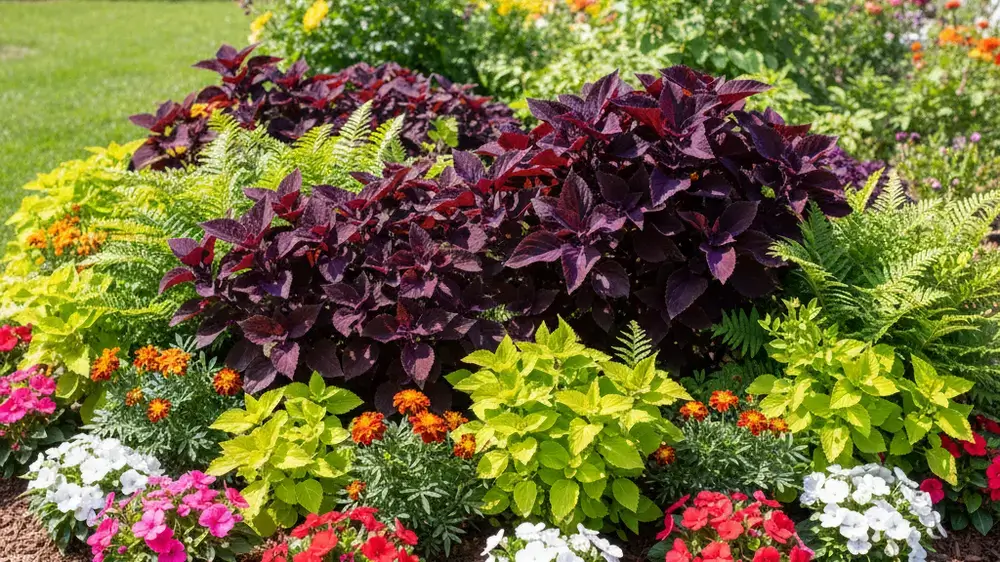
Actionable Tips for Beginner Gardeners
- Keep the soil moist but never waterlogged.
- Fertilize regularly for richer foliage.
- Pinch tips often for bushier growth.
- Pair with contrasting plants to make the purple pop.
- Protect from frost by overwintering indoors.
Conclusion
The dark purple coleus plant is one of the easiest and most rewarding plants you can grow. With its striking foliage, it adds beauty to any space while requiring minimal effort. By giving it the right balance of light, moisture, and care, you’ll enjoy a lush, colorful display throughout the growing season.
Whether you’re a beginner or an experienced gardener, coleus is a plant that deserves a spot in your collection. Why not start with a dark purple variety and watch your garden come alive with vibrant color?
FAQs About Dark Purple Coleus Plant
1. How much sunlight does a dark purple coleus plant need?
A dark purple coleus plant thrives in partial shade with bright, indirect light. Too much direct sun can fade the rich purple color of its leaves, while too little light may cause leggy growth. Outdoors, morning sunlight with afternoon shade works best. Indoors, place it near a window with filtered light to keep the foliage vibrant.
2. How often should I water my dark purple coleus plant?
Water the dark purple coleus plant whenever the top inch of soil feels dry. This plant prefers consistently moist soil but should never sit in standing water. Overwatering can lead to root rot, so make sure the pot has drainage holes. During summer, outdoor plants may need daily watering, while indoor plants generally need less frequent care.
3. Can I grow a dark purple coleus plant indoors?
Yes, the dark purple coleus plant grows beautifully indoors as long as it receives plenty of indirect light. Place it near a bright window and rotate the pot regularly to promote even growth. Keep the room warm and avoid drafts. With consistent watering and occasional fertilizing, it makes an excellent indoor accent plant.
4. How do I propagate a dark purple coleus plant?
The easiest way to propagate a dark purple coleus plant is through stem cuttings. Cut a 4–6 inch stem below a leaf node, remove lower leaves, and place it in water or moist potting mix. Roots usually develop within two weeks. Once rooted, transfer it to soil. This is a simple way to grow more coleus plants for your home or garden.
5. What are common problems with a dark purple coleus plant?
The most common problems with a dark purple coleus plant are overwatering, leggy growth, and pest infestations. Root rot often occurs if the soil is too soggy, so ensure good drainage. Legginess can be prevented by pinching back stems for bushier growth. Aphids, mealybugs, and whiteflies may appear, but they can be controlled with neem oil or insecticidal soap.

